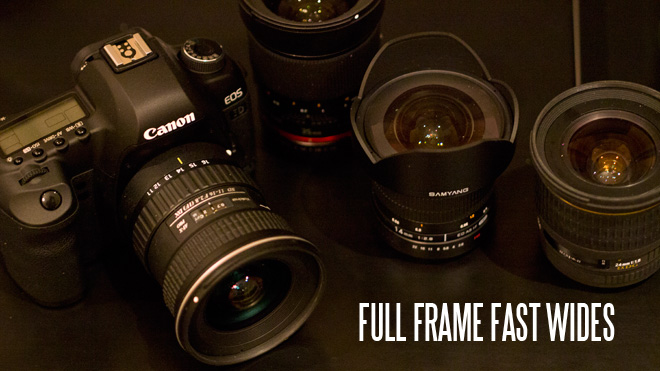
Although the Canon 24mm F1.4L and Samyang 24mm F1.4 are superb lenses, the Canon is $1500 and the Samyang $800. Here EOSHD goes hands-on with 4 more affordable fast wides for the 5D Mark II. They are especially cheap if you pick them up used on eBay.
On full frame, watch out for vignetting and distortion
Nearly all fast wide angle lenses on full frame have more vignetting and distortion than the Olympus 12mm F2 on the 1.86x crop GH2.
Why? A large full frame sensor is more demanding on optical perfection, whilst on a smaller sensor a lens can distort and it won’t be as noticeable. In the case of the Olympus 12mm F2 some of that distortion is even corrected in-camera digitally. Not so on the 5D Mark II.
Distortion is rarely noticeable unless you have straight lines shot dead-on running right through the frame, like the edge of a train platform from the passenger’s point of view or the doorway to a building at street level. Here any barrel distortion will curve your shot downwards at the edges and upwards in the middle, and it is very ugly.
Vignetting is a darkening of the image at the corners. Since the 5D Mark II crops the top and bottom of the sensor in 16:9 video mode, it is less of an issue in video mode than still mode, but much more noticeable than it would be on a smaller crop sensor.
How wide is wide?
28mm is considered a wide angle on full frame whereas on a crop sensor it is a much tighter field of view. I prefer the more dramatic 24mm. It is more ‘Kubrick’. Anything wider than 20mm on full frame usually has a more limited purpose for me. 35mm is still wide on the 5D Mark II and though more versatile than 28mm is not as dramatic for certain shots involving an extreme use of perspective (for example a narrow corridor where close-by walls run from infinity to close up, or a cliff face shot from the perspective of the climber). With a 35mm wide angle objects in the distance will appear closer than at 24mm. This is ‘depth compression’.
The contenders
- Tokina 11-16mm F2.8 AT-X PRO DX
- Sigma 24mm F1.8 EX DG
- Samyang 35mm F1.4
- Samyang 14mm F2.8
Tokina 11-16mm F2.8
eBay value: $650 / £400 [Find it now]
A truly fantastic lens. Though it may be the most expensive piece of glass in this round-up at $650, for the money you’re getting two lenses in one so it represents somewhat of a bargain. It is a fantastic fast wide zoom on APS-C where it can be dramatically wide or the equivalent to 24mm on full frame (at 16mm).
On full frame it works as a 16mm F2.8 prime. Wider and it vignettes. The image is very sharp and very dramatic, with full sensor coverage.
However make sure you turn off peripheral illumination correction in-camera. The profile it loads for the Tokina is designed for the EFS mount and APS-C sized sensors and it gives a ridiculous halo effect on the 5D Mark II when enabled. This is a glowing circular flare that wraps around the corners of the image.
Here is the image at 16mm:
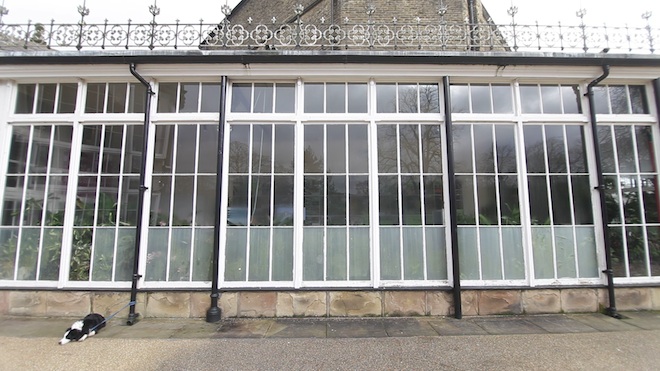
At 11mm it does not cover the full frame sensor – of course!
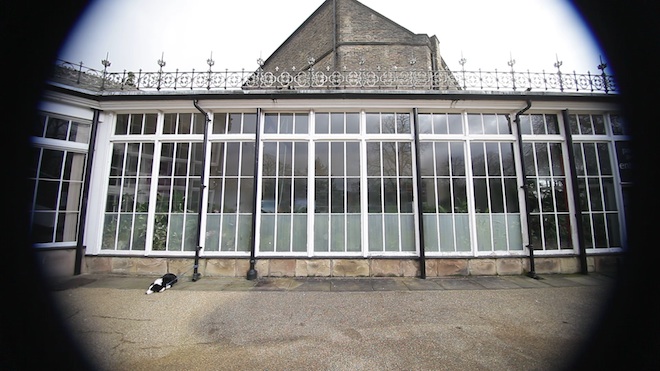
Here is the halo from dodgy corner brightness compensation on the 5D Mark II. Turn it off!

Sigma 24mm F1.8 EX DG
eBay value: $400 / £250 [Find it now]
I recently compared this lens to the Samyang 24mm F1.4 and it is not quite as good.
What it does give you though is fantastic value for money and – for stills – AF. To be honest, corner sharpness aside the Sigma is in the same league to the Samyang despite being almost half the price 2nd hand.
In the centre of the frame image quality is fantastic for the price. It has a very fast aperture, is sharp even wide open, has less distortion than the more expensive Samyang and even a little less vignetting. The weaknesses are: it isn’t as bright (both in terms of maximum aperture and real t-stop), it is very soft in the corners at fast apertures and the focus ring has a very short travel, feeling less precise than on most other lenses.
Here is the look it produces at 24mm on the 5D Mark II:
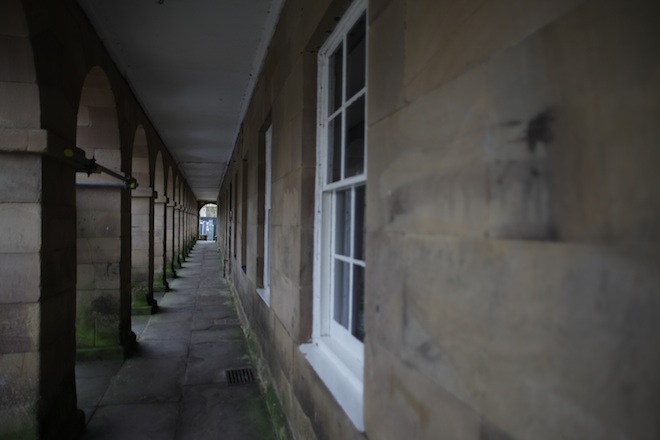
Samyang 35mm F1.4
eBay value: $500 / £350 [Find it now]
My original review concentrated on the Samyang 35mm F1.4 for crop sensors (GH2, 600D). Read it here
No matter what camera you use this on, 35mm F1.4 is very versatile. You can use it as a portrait lens on the GH2 or a moderate wide angle on full frame, which is what it is designed for. You get a shallower depth of field than at 24mm but of course it is not as dramatically wide.
Flare is a weak point of the Samyang – when a light source is at the edge of the frame you tend to get a burst of flame like flare curved around the centre of the frame and it isn’t the pretty kind.
Although construction relies a lot on plastic, the actual mechanics of the lens are excellent. It is internally focussing with a very long travel on the manual focus ring. No moving front element like on the Sigma 24mm F1.8.
When stopped down to F5.6 or narrower apertures the field of view will zoom slightly whilst racking focus during a shot. This is called ‘breathing’. However since the background is creamy bokeh at F1.4 the effect isn’t as noticeable wide open.
Very good value for money considering the optical performance is similar to the Canon and Nikon equivalents.
Samyang 14mm F2.8 [Find it now]
eBay value: $300 / £200
Distortion is hideous on this lens. Yes it is cheap, but I don’t like it. It is an extremely wide lens verging on the fish eye. Unfortunately I’d rather have it either one way or the other and this lens doesn’t seem to know what it wants to be. It isn’t distorted like a fish eye, but it is WAY more distorted than a standard lens. Just compare this shot at 14mm (on the right) to the same shot taken at 16mm with the Tokina 11-16mm F2.8 on the 5D Mark II, left.
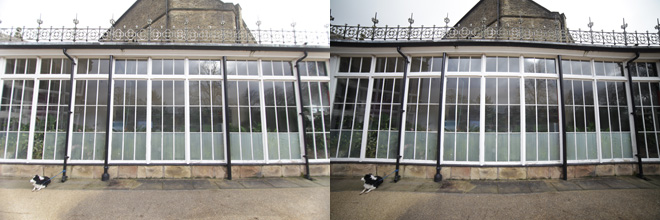
I don’t like the distortion profile at all – it is like a broken standard lens. Fish eyes are more cinematic.
Samyang do a great fisheye for APS-C, and a very sharp full frame 24mm F1.4 and 35mm F1.4 which are superb value for money considering performance and specs. Although the Samyang 14mm F2.8 is the widest and cheapest lens in the test, I’d rather have a 16mm fisheye like the $150 Russian Zenitar F2.8 or pay more and get a decent prime in the 16-20mm range, with far less distortion.


